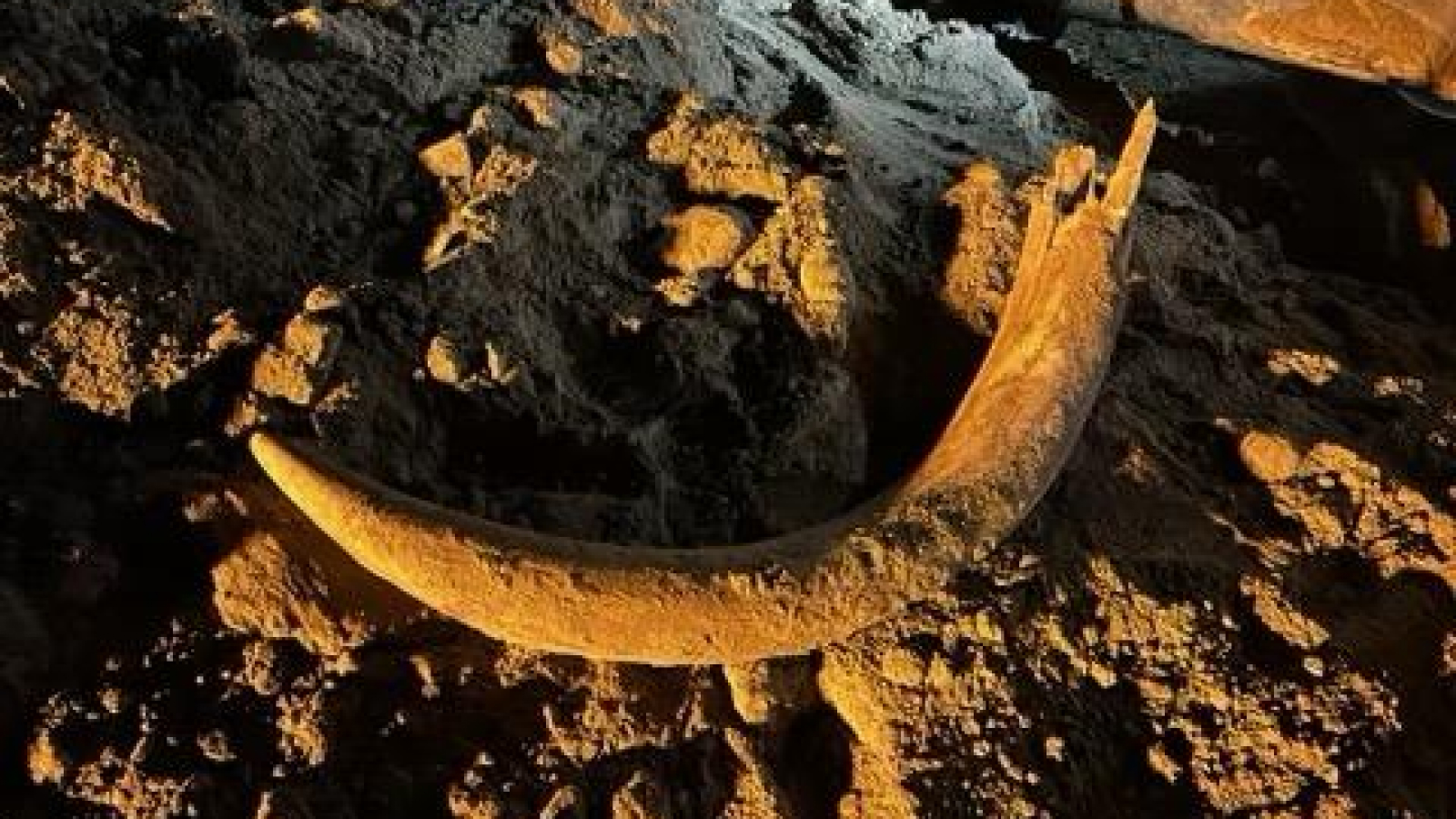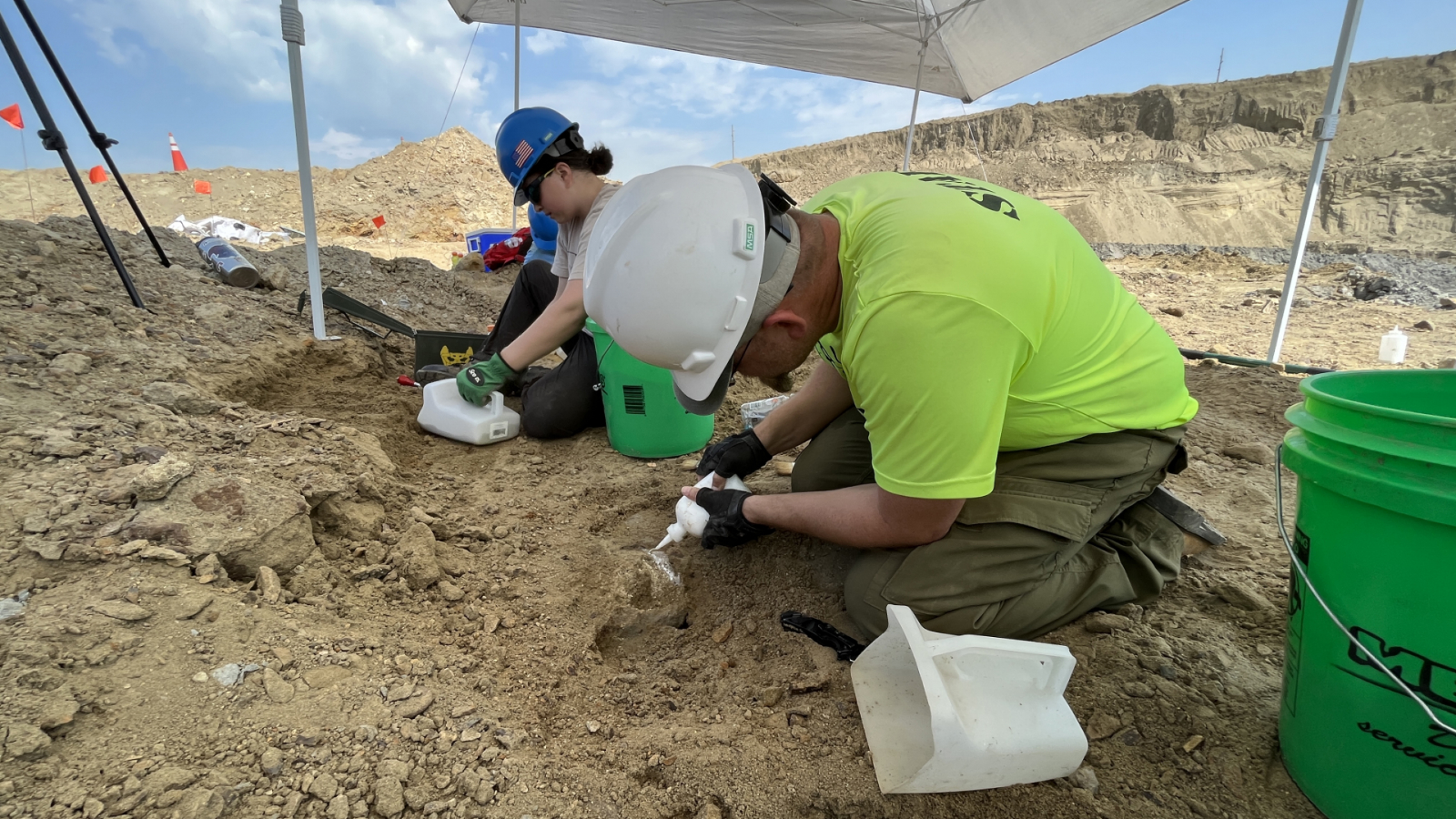Huge, complete mammoth tusk accidentally discovered by North Dakota coal miners
A tusk scooped up my miners in North Dakota turned out to be one of the most complete skeletons of a mammoth ever discovered in the state.

Coal miners in North Dakota made an astonishing find when they unearthed a partial mammoth skeleton with a complete, 7 foot (2.1 meter) tusk.
The miners discovered the well-preserved mammoth tusk while working at the Freedom Mine, near the city of Beulah, over Memorial Day weekend last May. According to KFYR, the tusk was scooped up and loaded onto a truck before the miners noticed it.
The area was quickly closed off to allow paleontologists at the North Dakota Geological Survey, the State Historical Society of North Dakota, and the Bureau of Land Management to excavate the old streambed where the fossils were buried.
They gradually unearthed more than 20 bones from the mammoth skeleton, including ribs, a shoulder blade, a tooth and parts of the hips, at the site.
This discovery is remarkable, said Clint Boyd, senior paleontologist for the North Dakota Geological Survey, in a statement, because most mammoth fossils found in North Dakota are single bones and teeth.
"This specimen is one of the most complete mammoth skeletons discovered in North Dakota, making it an exciting and scientifically important discovery," he said.
Jeff Person, a paleontologist with the North Dakota Geological Survey told the Associated Press it was "miraculous" the tusk had not been damaged during removal.
Sign up for the Live Science daily newsletter now
Get the world’s most fascinating discoveries delivered straight to your inbox.
The bones were covered in protective plastic wraps before being transported to the Paleontology Lab at the North Dakota Heritage Center and State Museum in Bismarck. They will be carefully cleaned so they can be examined in detail.

Then, the bones will be used to educate the general public about life during the last ice age (2.6 million to 11,700 years ago), although it's not yet known where they will be kept.
Several species of mammoth lived in North America during the Ice Age, including the woolly mammoth (Mammuthus primigenius) and the Columbian mammoth (Mammuthus columbi). Once the bones are fully cleaned, paleontologists will be able to identify from which mammoth species they belong.
Mammoths went extinct around 10,000 years ago. Warmer temperatures caused a loss of habitat for these megafauna, which — combined with human hunting — led to huge population declines.
Scientists have used mammoth fossils to discover more about these gigantic creatures. Genetic testing has found woolly mammoths to be more closely related to the modern African elephant (Loxodonta africana) than to the Asian elephant (Elephas maximus). Research has also shown that woolly mammoths' distinctive traits, including their smaller ears, large fat deposits and fluffy coats, became more pronounced over 700,000 years as they adapted to freezing conditions.
In 2021, scientists sequenced the DNA recovered from mammoth remains to find that the Columbian mammoth was a hybrid between the woolly mammoth and a previously unknown genetic lineage of mammoth.

Lydia Smith is a health and science journalist who works for U.K. and U.S. publications. She is studying for an MSc in psychology at the University of Glasgow and has an MA in English literature from King's College London.










